It is time for the second half of last week's IPI Inbox, this time to answer questions focused more on the Indians minor leaguers. As always, if you have a question you would like answered, please feel free to contact me.
Eric T. wrote: Are [the Indians] going to use Alex White as a starter or reliever and when do you think we could see him I remember some saying as soon as late this year?
Me: White is going to be a starter this year and open at High-A Kinston. Putting him in the bullpen is something the Indians have decided to keep in their back pocket as he is just more valuable if he can start. With three above average pitches and the draft position he was taken, they almost have to see him through as a starter for at least all of this year. At this point the relief option will only be a fallback if they don't think he will translate well to the bigs as a starter. He won't be in Cleveland this year as there is no rush, but if things go extremely well there is an outside chance he could be with the team sometime in the second half of 2011, though seems very unlikely.
Eric T. wrote: Either our system is very deep or we didn’t do that great for one of the top set-up men in baseball [in trading Rafael Betancourt for Connor Graham who is only ranked #38 on the 2010 IPI list].
Me: Aside from Betancourt’s 2007 and 2008 seasons which went to both extremes of good and bad, he has been one of the most dependable and reliable relievers in the game the past six to seven years. When the Indians traded him a big part of the trade was dumping his salary, so finding a taker was limited to who would take on all of the remaining portion of his 2009 salary ($1.5 million) plus give a prospect in return. Remember too that he was on the disabled list in July with a strained groin, so that may have hurt his trade value some. The Indians were looking for some financial relief, so to my knowledge that was the main focus of the trade. Getting back an interesting power-armed reliever in Graham was a bonus.
While Graham is by no means a top prospect, he has some intriguing stuff and really adds to the quality and depth of the system. In normal years he would probably be ranked in the 20-25 range in the Indians system, but because of the ridiculous amount of depth in the system he comes in a lot lower. It was an interesting exercise ranking out the Top 30-50 players this year in the Indians system as I almost feel I need to apologize to the guys I ranked in the 30s as they should be in the early 20s. I mean, anyone in my Top 30 this year would have probably been in the Indians Top 10 two years ago, and most definitely Top 15.
Toledobuck wrote: For what [Eric] Berger has done to date and his mental makeup, #27 seems pretty low for this prospect. He shows several good big league pitches, has good velocity on the fastball, has had excellent stats, and is our most athletic pitcher in the system. He seems more to be in the 10 – 18 range to me.
Me: I here you and mostly agree, though as I noted in a few other player comments some guys are lower than expected just by the sheer volume of talent in the organization. Had we not gone out and made all of those trades last year, Berger would probably sit somewhere in the 15-19 range right now. But when you pick up ten good pitching prospects in trades last year plus add in a #1 Draft pick, it affects the standing of guys who have been in the system the past few years. He is still viewed as a back of the rotation kind of starter with a ceiling as a mid-rotation starter, so he is lower than a lot of other guys with more upside who are considered middle of the rotation starters and potentially better.
Matt wrote: Tony, thank you for all the insight. I think you talked to a scout who had watched [Bryan] Price this year at Kinston and said he was expecting to see a blazing mid 90's fastball but only saw a 90-91 fastball from him. The scout did compliment his secondary stuff. Do we need to be concerned about his drop in velocity?
Me: Thanks Matt. I believe Price may have been going through a dead arm phase. Remember that he had just 65 career college innings over three seasons from 2006-2008, and then last year he threw 130+ innings in his first full season. So he may have been a tired pitcher, which would explain the velocity decrease at the end of the season. There was nothing that was concerning at least to this point. It will be interesting to see if they do complete the change to the bullpen for him this year and how his velocity looks late in spring.
Llama wrote: [Frank] Hermann sounds really impressive! Any idea as to whether the Tribe will leave him in the pen or continue to develop him as a rotation guy?
Me: I love Herrmann and hope he gets his shot and excels. If not, then he is going to be very successful in the business world I'll tell you that. He is being developed and looked at strictly as a bullpen guy as his stuff works better there. He could always go back to starting, but his path to the bigs is as a reliever. And no doubt, he is #35 but it doesn’t mean he is no good. He could very well be #17-19, but relievers don’t rank high unless they have dominating stuff and as I have mentioned several times it is just a deep system.
BayStateBuckeye wrote: I've always wondered about the service time calculation since there are more actual days in the season than the number that is considered 'one full year'. Can a guy accrue more service time after the 172 days to carry over? Or does the clock stop in a given year once 172 is reached?
Me: 172 days are considered one year of service. Even though the season is actually 180 days or so long, no player can accrue more than 172 days of service in one season. So, if a player starts the season with 1.037 days of service (1 year, 37 days) and then spends the entire year on the 25-man roster, then he will have 2.037 days of service going into the next season.
BayStateBuckeye wrote: You mention that the Tribe was going to spend the $2 million this year on 'someone'. Is their budget structure such that they need to spend it that year or lose it? Or is there ever a carryover to the next year's budget? It seems to me that the $2 million would be better spent next offseason to help bring in a needed FA (not necessarily a $2M FA but using that money to supplement and get someone they want).
Me: To my knowledge, the Indians and other clubs set their budgets for the upcoming season several months before the season starts, and in the Indians case theirs was set back in November. The budget is obviously made up of many parts to run the organization for the upcoming season, and two of the things determined at that time are payroll and their draft budget. As I understand it, the proposed budget is for this year only as unused budgeted money on payroll or the draft does not carry over to the next season. In almost every case, the Indians spend up to their payroll or draft budget anyway, but in the case they may not that money is not carried over to the next season. This is something I think that gets lost when fans say things like “they should have saved that money for next year to sign so-and-so”.
Again, from what I know this is not how it works as all money budgeted for the upcoming season is for that season only. Anything they don’t happen to spend or save just goes back to the team’s general fund. The only time that I am aware of where saved money comes into play where budgets cross is with July trades. In the past freed up money from July trades have not only helped the Indians bottom line, but it also allowed them to be a little more aggressive with some late draft pick signings or Latin free agent signings. An example of this was seen in August 2008 when the Indians spent around $3 million right at the August signing deadline for the likes of Zach Putnam, Tim Fedroff, T.J. House, and Trey Haley after they had dumped the $2-3 million left on Paul Byrd’s contract to the Red Sox earlier that month.
Nate wrote: I'm a little disappointed to see Jeanmar Gomez so low in the rankings, but it definitely says a little something about their depth in the minor leagues now. To have a player that threw a no-hitter at AA and only appear at #19 in the system is very encouraging.
Me: I’m not as high on Gomez as some, but the fact that he is in the top 20 is still very good as he’d be #8-12 in most organizations. The pitchers ranked above him are just better prospects as they either throw harder or have an excellent secondary pitch or two. Gomez is a solid pitching prospect, but what hurts him is he is very much like a Jeremy Sowers in that he is good, but lacks any kind of put away pitch or plus pitch in his arsenal. He will need to rely on command and control, and profiles as a back-of-the-rotation starter or at best a mid-rotation starter.
Follow Tony on Twitter @tlastoria, and his new 2010 Cleveland Indians Top 100 Prospects & More book is available for purchase.



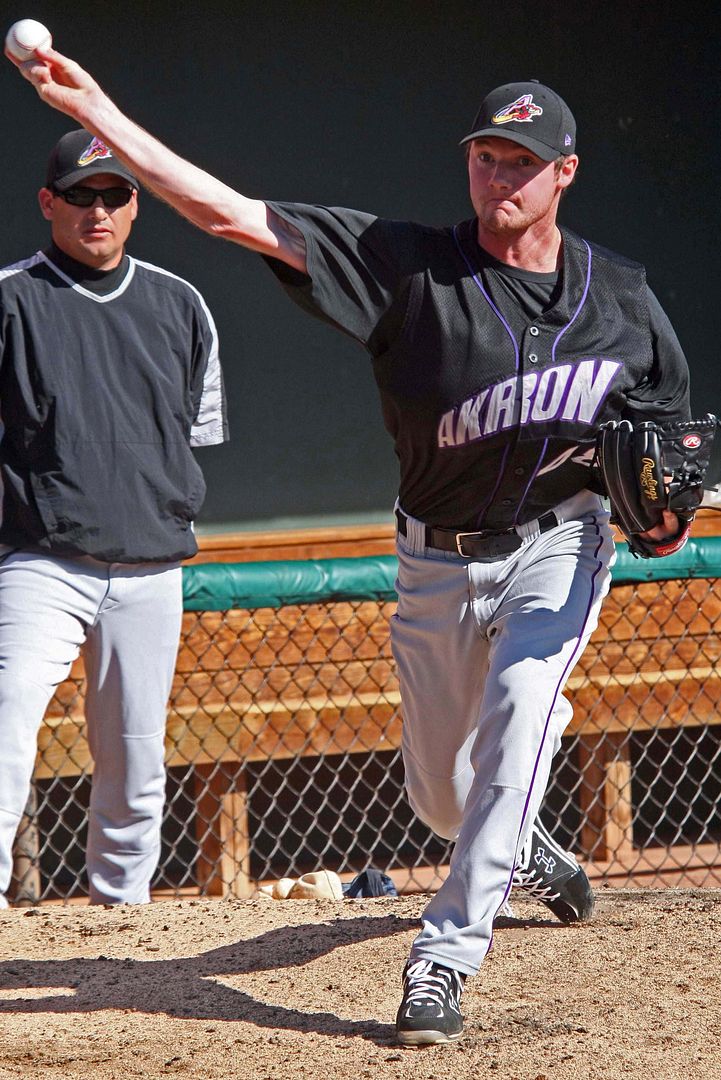







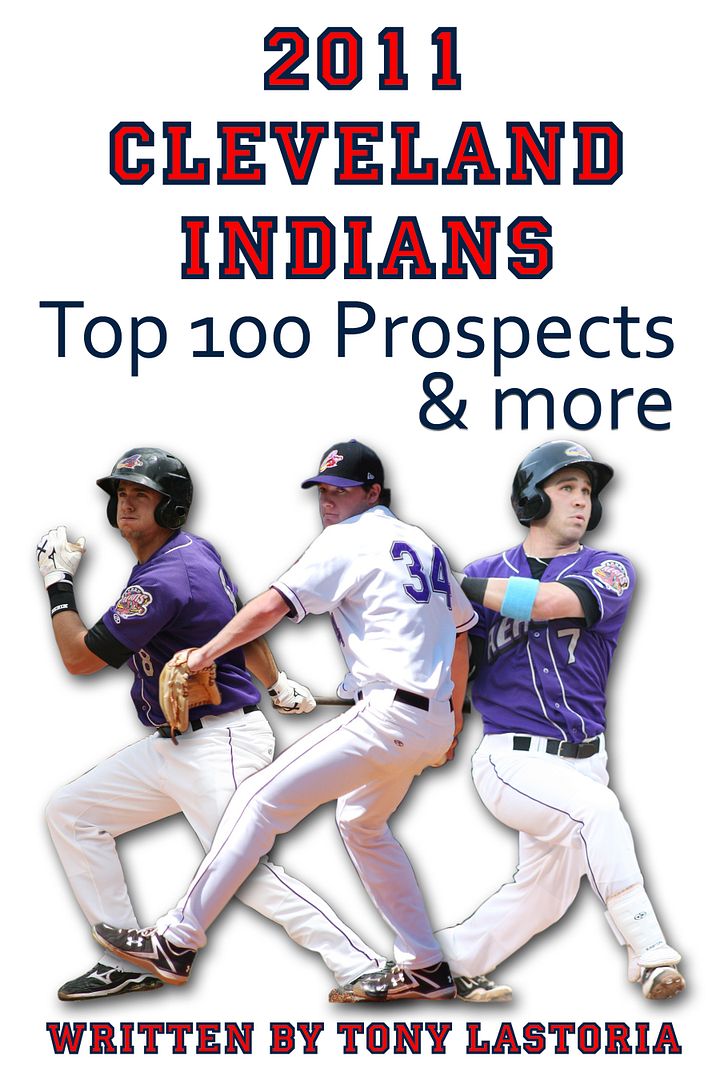
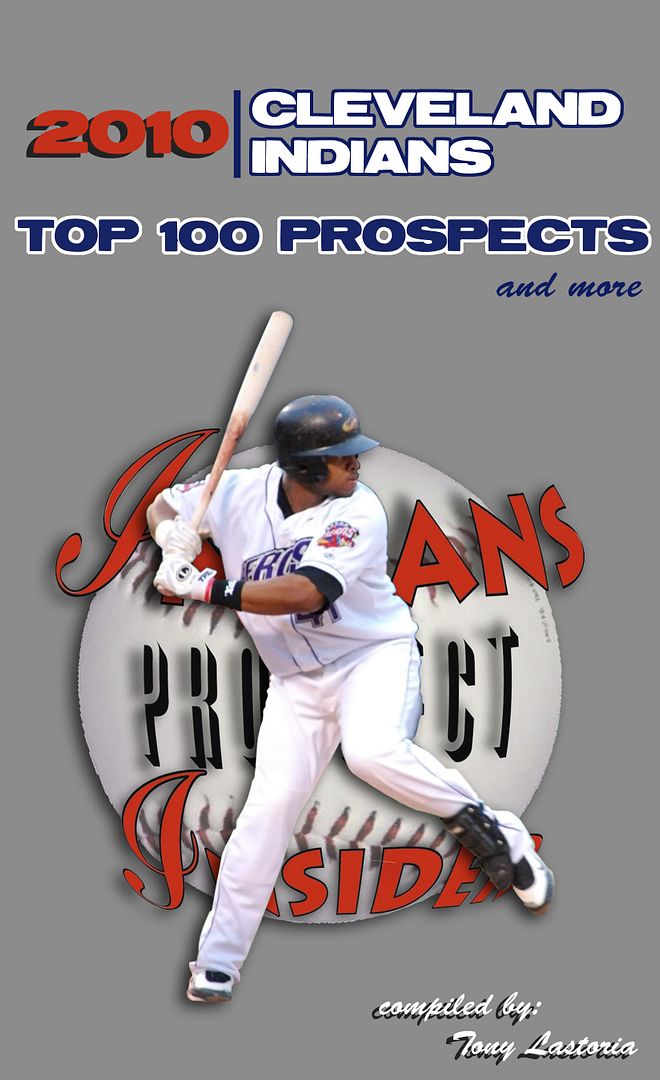
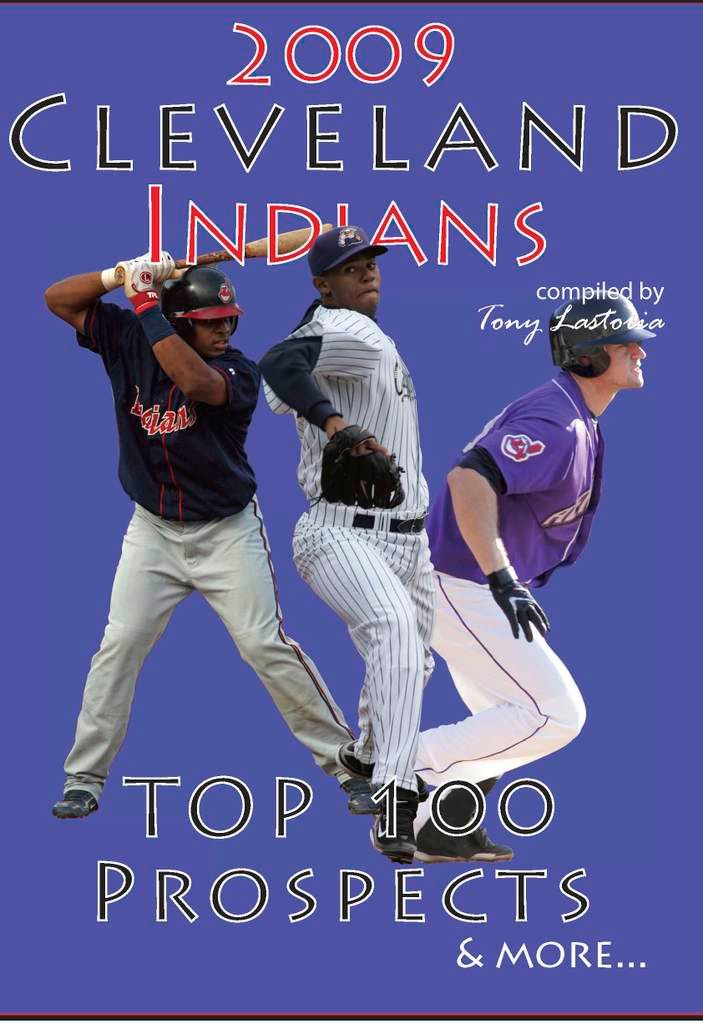
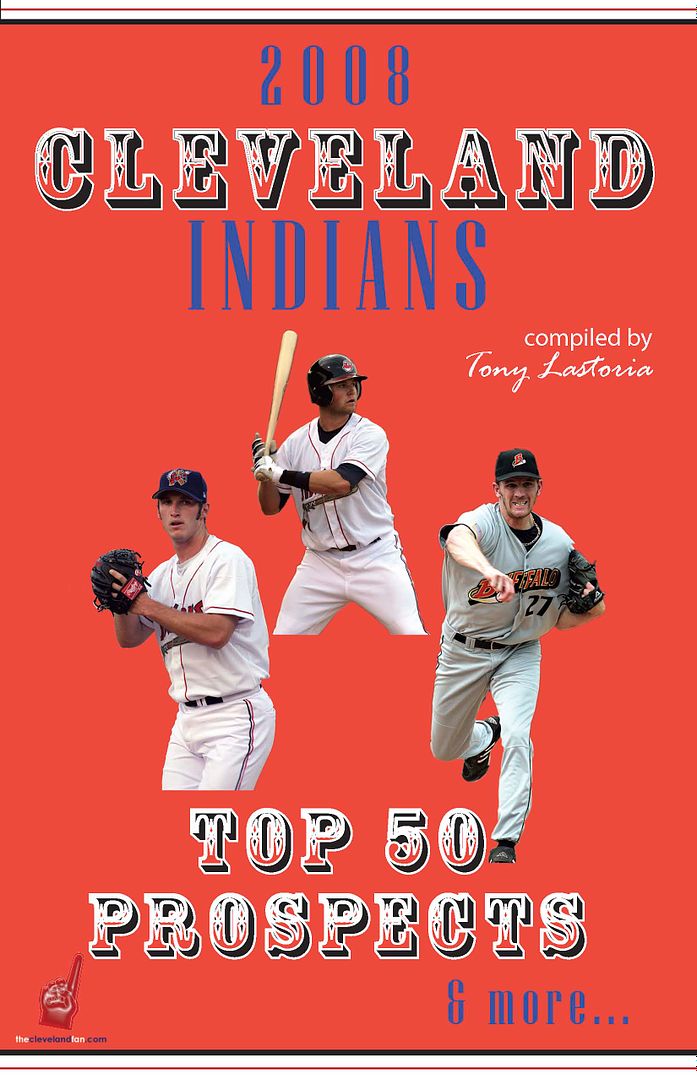
 Everything on this site is free, but for those interested in making any monetary contributions to help support the stability and growth of this site please click on the "Donate" button below.
Everything on this site is free, but for those interested in making any monetary contributions to help support the stability and growth of this site please click on the "Donate" button below.


0 comments:
Post a Comment